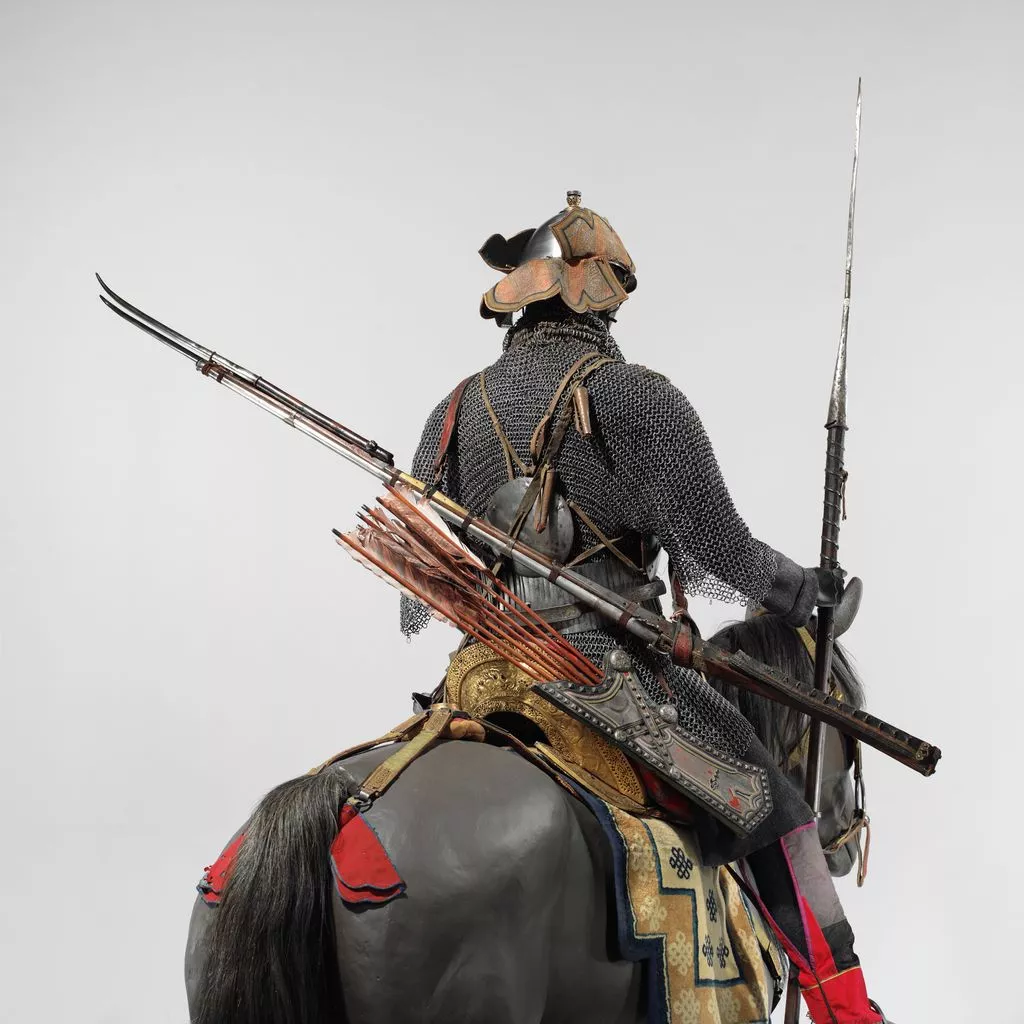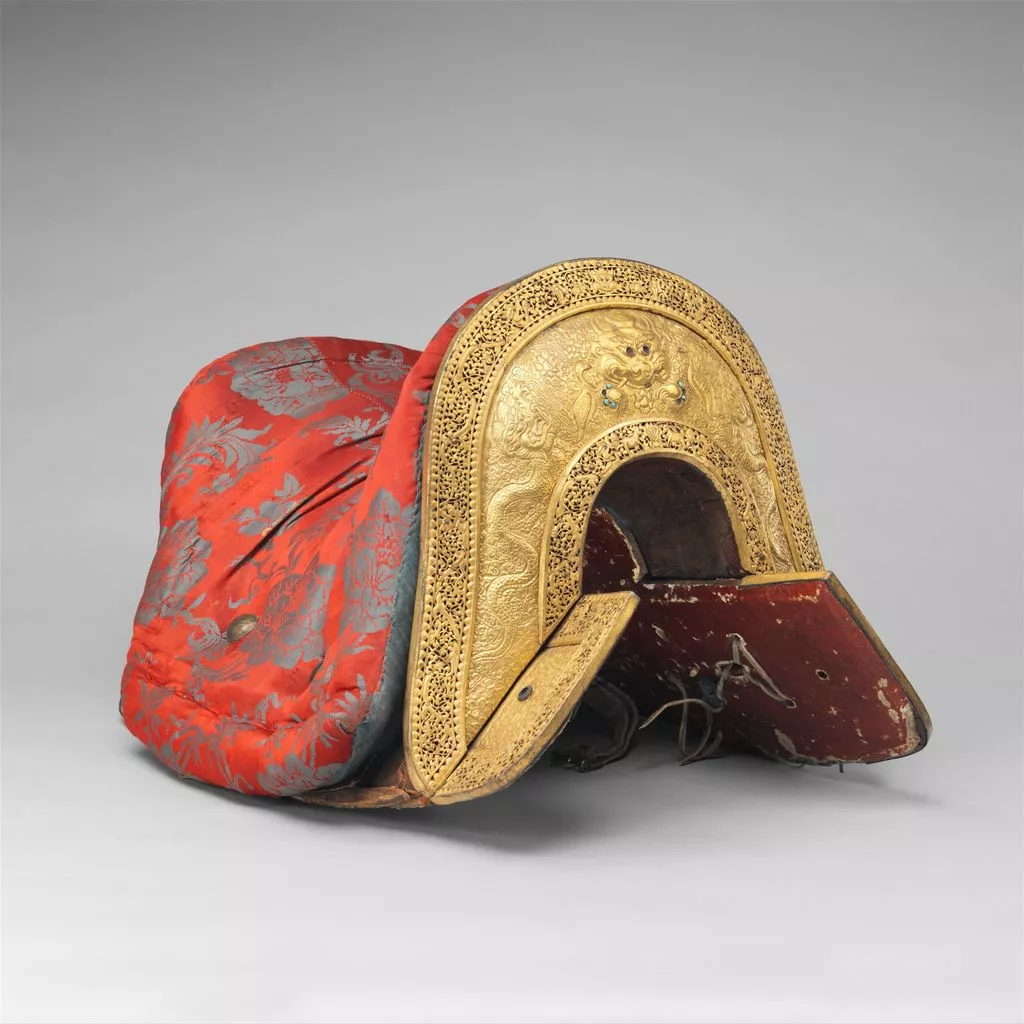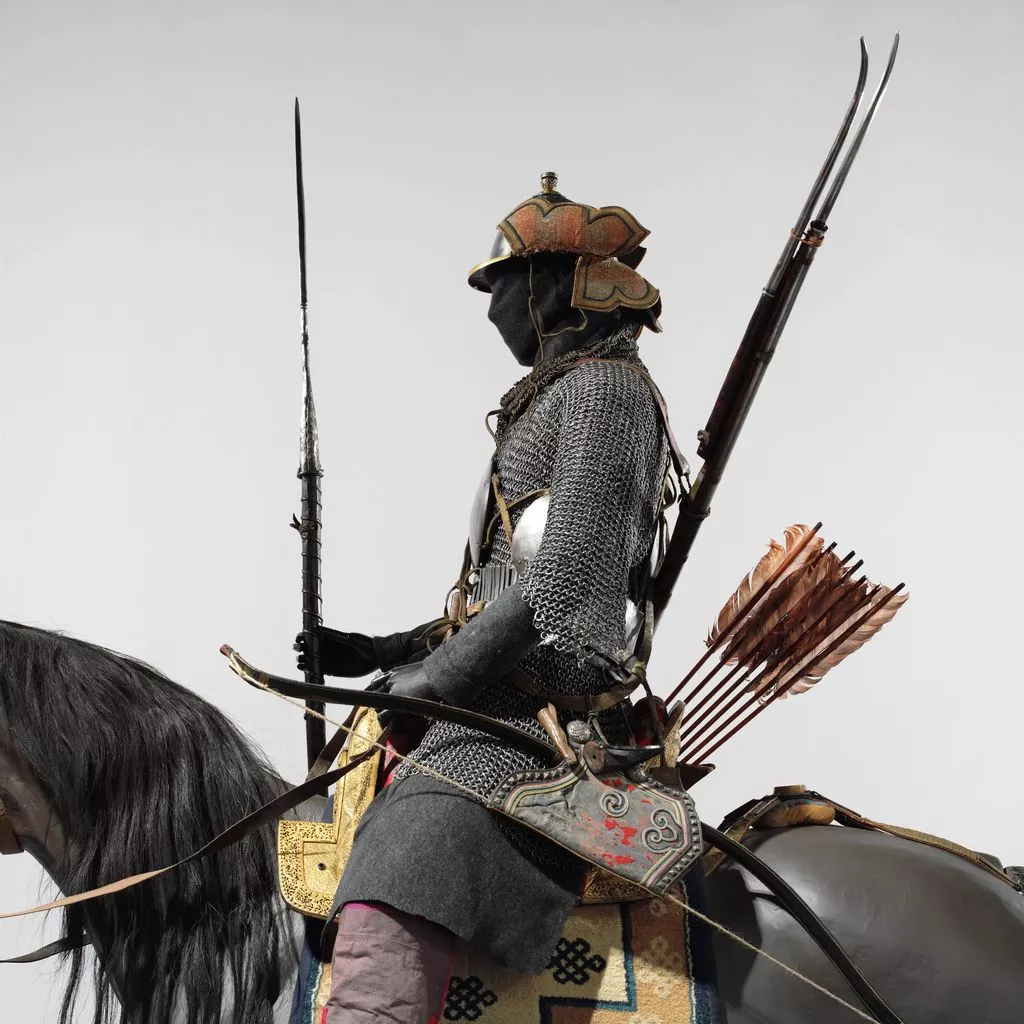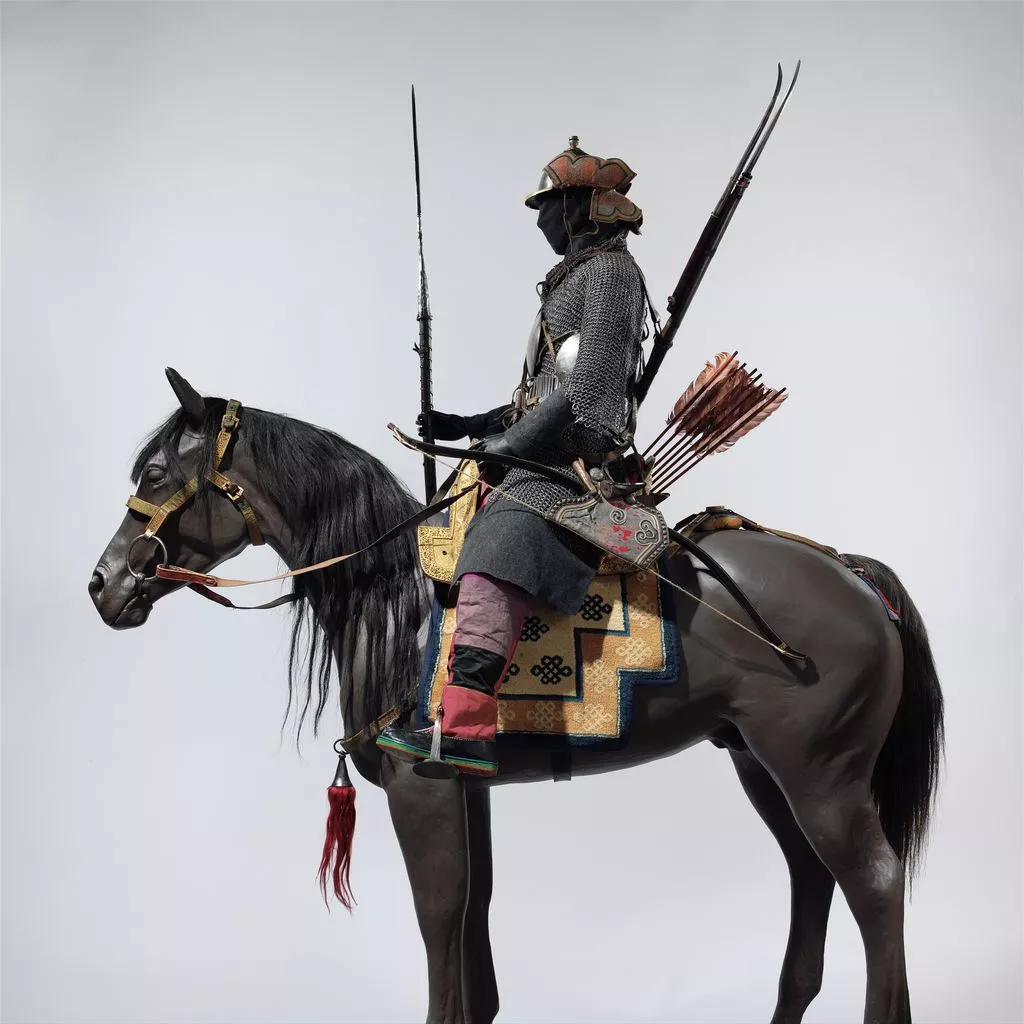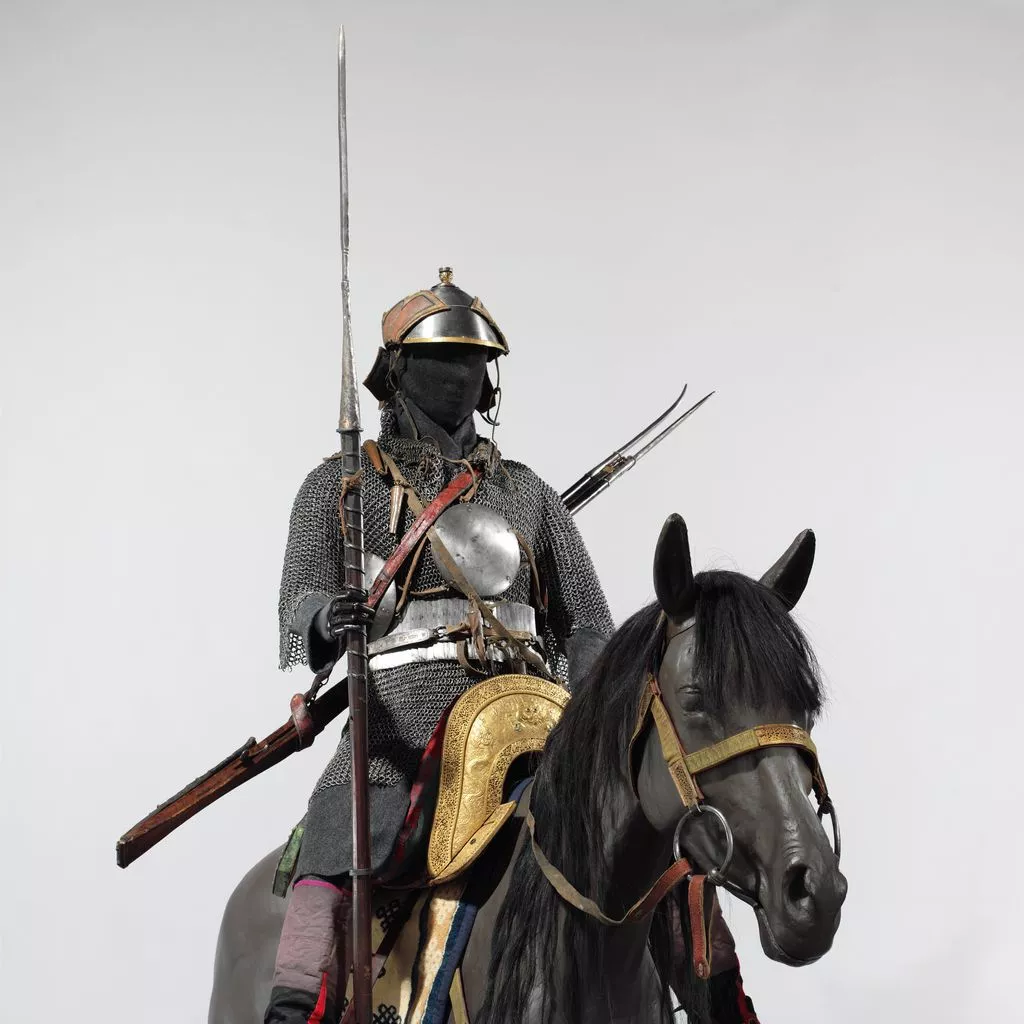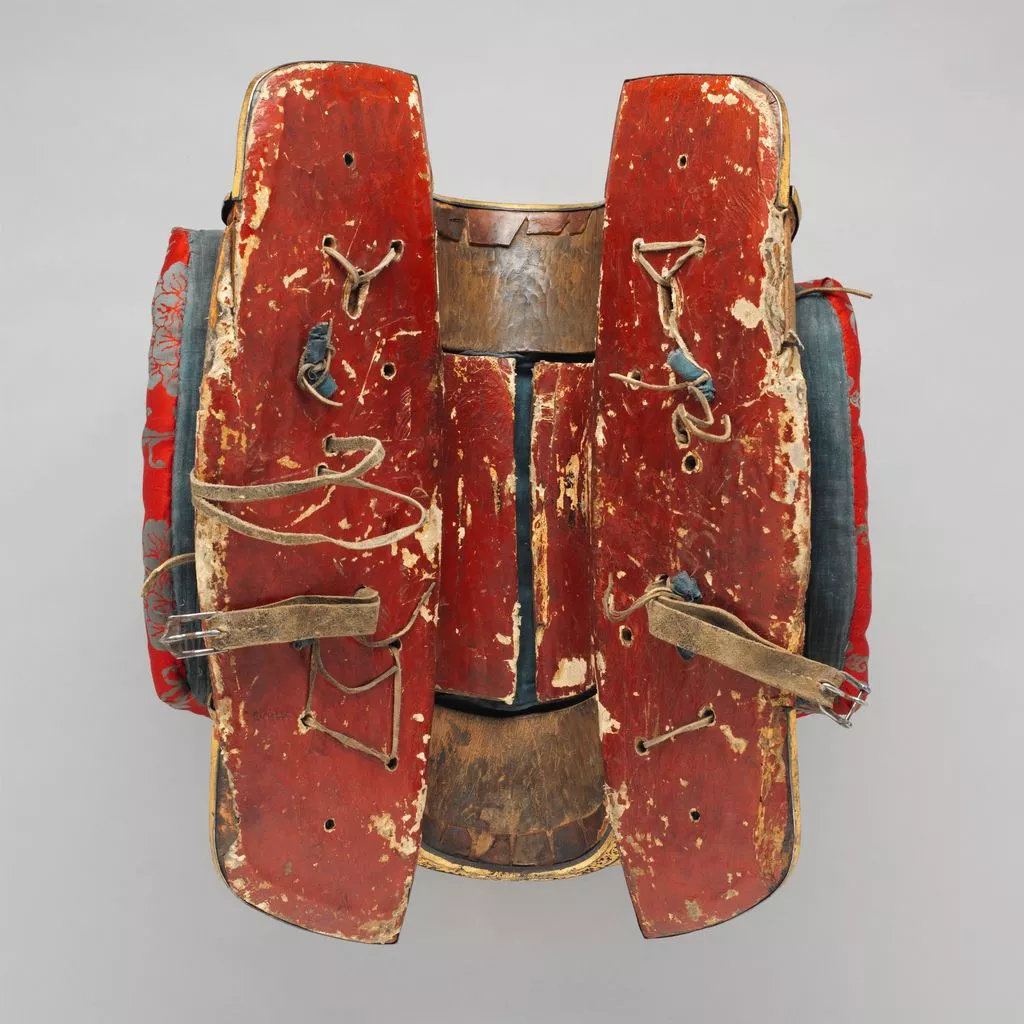Description
This figure has been assembled based on photographs taken in the 1930s and 1940s, in the Tibetan capital of Lhasa during the Great Prayer Festival. Part of the festival included troops of ceremonial armored cavalry, who wore a standardized set of equipment as stipulated by the central government of Tibet from about the mid-seventeenth or eighteenth century onward. This included a helmet, shirt of mail, set of four mirrors, armored belt, bow case and quiver, matchlock musket, bandoleer with gunpowder and bullets, and short spear for the rider, as well as a saddle, saddle rug, and tack for the horse. Armed and equipped in a similar fashion, Tibetan goverment officials periodically were required to demonstrate proficiency on horseback with musket, bow and arrow, and spear until as late as the mid-twentieth century.











